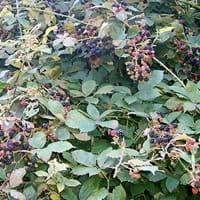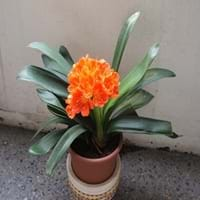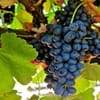Life Span
Perennial
Perennial
Type
Fruit
Bulb or Corm or Tuber
Origin
Hybrid origin
South Africa
Types
Not Available
Not Available
Habitat
ditches, vacant lots, wastelands
Temperate Regions, Woodlands
USDA Hardiness Zone
6-9
9-11
Sunset Zone
1a, 1b, 2a, 2b, 3a, 3b, 4, 5, 6, 7, 8, 9, 10, 11, 12, 13, 14, 15, 16, 17, 18, 19, 20, 21, 22, 23, 24
21,22
Habit
Upright/Erect
Clump-Forming
Flower Color
White
Yellow, Red, Orange
Flower Color Modifier
Bicolor
Bicolor
Leaf Color in Spring
Green
Dark Green
Leaf Color in Summer
Green
Light Green
Leaf Color in Fall
Green
Several shades of Green
Leaf Color in Winter
Light Green
Light Green
Leaf Shape
Palmate
Long Linear
Plant Season
Summer
Spring, Winter
Sunlight
Full Sun
Partial shade, Full Shade
Type of Soil
Loam
Loam, Sand
The pH of Soil
Acidic, Neutral
Acidic, Neutral
Soil Drainage
Well drained
Well drained
Bloom Time
Spring
Early Spring, Spring, Late Spring, Winter, Late Winter
Tolerances
Drought
Drought
Where to Plant?
Ground
Container, Ground
How to Plant?
Stem Cutting
Seedlings, Transplanting
Plant Maintenance
Medium
Medium
Watering Requirements
Water frequently while growing
Water more in summer
In Summer
Lots of watering
Lots of watering
In Spring
Moderate
Moderate
In Winter
Average Water
Average Water
Soil pH
Acidic, Neutral
Acidic, Neutral
Soil Type
Loam
Loam, Sand
Soil Drainage Capacity
Well drained
Well drained
Sun Exposure
Full Sun
Partial shade, Full Shade
Pruning
Remove damaged leaves, Remove dead branches, Remove dead leaves
Remove damaged leaves, Remove dead branches, Remove dead leaves
Fertilizers
10-10-10 diluted liquid fertilizer
fertilize in growing season
Pests and Diseases
Anthracnose, Aphids, bees, Birds, Caterpillars, Lily Beetle, Red blotch
Red blotch
Plant Tolerance
Drought, Variety of soil types
Drought
Flowers
Insignificant
Showy
Flower Petal Number
Single
Single
Foliage Texture
Medium
Coarse
Foliage Sheen
Matte
Glossy
Attracts
Birds, Butterflies, Deers
Insects
Allergy
Food Allergy, Runny nose, Sinuses, sneezing
Asthma, breathing problems, Itchiness
Aesthetic Uses
Not Used For Aesthetic Purpose
Beautification, Landscape Designing, Showy Purposes, Used for decorating walls, fences, gates, hedges, etc.
Beauty Benefits
Not Available
Not Available
Environmental Uses
Air purification, Food for animals, Food for birds, Food for insects
Air purification, Food for insects, Prevent Soil Erosion
Medicinal Uses
Fiber, Vitamin A, Vitamin C
No Medicinal Use
Part of Plant Used
Fruits, Leaves, Seeds
Flowers
Other Uses
Food for animals, Food for insects, Used as a nutritious food item, Used for its medicinal properties
Decoration Purposes, Showy Purposes, Used as Ornamental plant
Used As Indoor Plant
No
Yes
Used As Outdoor Plant
Yes
Yes
Garden Design
Edible, Fruit / Fruit Tree, Hedges
Container, Feature Plant, Foundation, Houseplant, Mixed Border
Botanical Name
RUBUS 'Apache'
CLIVIA miniata
Common Name
Blackberry
Clivia
In Hindi
ब्लैकबेरी
Clivia
In German
Brombeere
Clivia
In Greek
Βατόμουρο
κλίβια
In Portuguese
Amora preta
Clivia
Phylum
Magnoliophyta
Magnoliophyta
Class
Magnoliopsida
Liliopsida
Order
Rosales
Asparagales
Family
Rosaceae
Liliaceae
Clade
Angiosperms, Eudicots, Rosids
Angiosperms, Monocots
Tribe
Rubeae
Not Available
Subfamily
Rosoideae
Amaryllidoideae
Number of Species
Not Available
Properties of Blackberry and Clivia
Wondering what are the properties of Blackberry and Clivia? We provide you with everything About Blackberry and Clivia. Blackberry doesn't have thorns and Clivia doesn't have thorns. Also Blackberry does not have fragrant flowers. Blackberry has allergic reactions like Food Allergy, Runny nose, Sinuses and sneezing and Clivia has allergic reactions like Food Allergy, Runny nose, Sinuses and sneezing. Compare all the properties and characteristics of these two plants. Find out which of these plant can be used as indoor plant. If you are interested to decorate your house and garden, find out aesthetic uses, compare them and select the plant which will beautify your surrounding. Along with beautification, try comparing medicinal and edible uses of Blackberry and Clivia and you can choose the plant having best and most benefits.
Season and Care of Blackberry and Clivia
Season and care of Blackberry and Clivia is important to know. While considering everything about Blackberry and Clivia Care, growing season is an essential factor. Blackberry season is Summer and Clivia season is Summer. The type of soil for Blackberry is Loam and for Clivia is Loam, Sand while the PH of soil for Blackberry is Acidic, Neutral and for Clivia is Acidic, Neutral.
Blackberry and Clivia Physical Information
Blackberry and Clivia physical information is very important for comparison. Blackberry height is 150.00 cm and width 120.00 cm whereas Clivia height is 30.50 cm and width 25.40 cm. The color specification of Blackberry and Clivia are as follows:
Blackberry flower color: White
Blackberry leaf color: Green
Clivia flower color: Yellow, Red and Orange
- Clivia leaf color: Dark Green
Care of Blackberry and Clivia
Care of Blackberry and Clivia include pruning, fertilizers, watering etc. Blackberry pruning is done Remove damaged leaves, Remove dead branches and Remove dead leaves and Clivia pruning is done Remove damaged leaves, Remove dead branches and Remove dead leaves. In summer Blackberry needs Lots of watering and in winter, it needs Average Water. Whereas, in summer Clivia needs Lots of watering and in winter, it needs Average Water.





